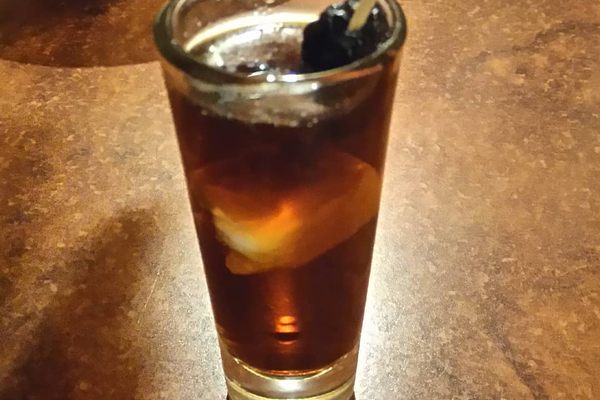When American colonists and their British counterparts needed to boil cocktails, cauterize wounds, and ignite the occasional cannon, the loggerhead was an essential multi-tool.
Blacksmiths fashioned loggerheads by attaching several feet of iron to the end of a wooden handle. Once red-hot from an open flame, this strip of metal could melt solids and solidified liquids. Shipbuilders commonly relied on the tool to melt pitch—a byproduct of distilling tar or petroleum—which they used to caulk seams.
Bartenders also used loggerheads to whip up hot drinks. By plunging the heated device into an earthenware pitcher or large pewter mug, they could caramelize, boil, and froth boozy concoctions into all kinds of drinks. Before central heating, patrons warmed up with the help of hot beverages like toddies, hot punches, and flips (a Colonial favorite made from frothed ale, rum, and sweetener).
Loggerheads were so ubiquitous in England that British people used the term as an insult, suggesting their target had a piece of iron for a head. They also coined the expression “at loggerheads” to mean “at odds” with another person, which later came to imply a disagreement that escalated into physical violence.
At least if a fight were to break out as a result of too many loggerhead-heated drinks, you’d already have a tool to cauterize any wounds.
Written By
 rachelrummel
rachelrummel
Sources
- thehistorians-jaredbrown.blogspot.com/2012/10/tools-of-trade-at-loggerheads-with-toddy_5.html
- www.harmonioushomestead.com/stories/2013/03/12/rum-flip-cocktail
- books.google.com/books?id=sYScAQAAQBAJ&pg=PA838&dq=%22at+loggerheads%22+OED&hl=en&sa=X&ved=0ahUKEwitmOGf0pnYAhXuk-AKHXxxBeQ4ChDoAQgmMAA#v=onepage&q=%22at%20loggerheads%22%20OED&f=false
- books.google.com/books?id=TrExKFNmKFcC&printsec=frontcover&dq=and+a+bottle+of+rum&hl=en&sa=X&ved=0ahUKEwjZ-6aq15nYAhXHRt8KHSbpDwgQ6AEIJzAA#v=onepage&q=loggerhead&f=false















